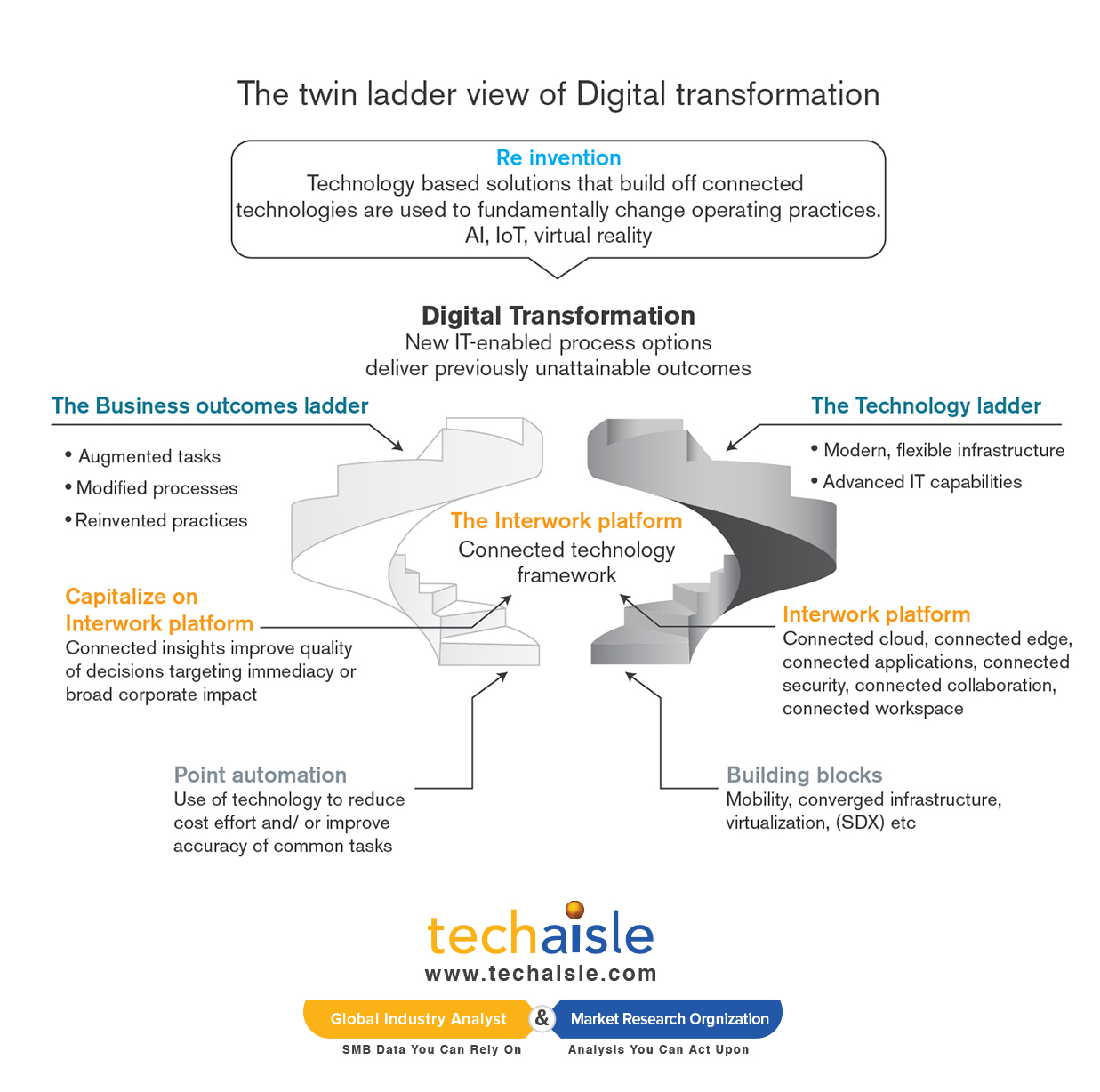Techaisle Blog
Delivering digital transformation benefits to SMB and mid-market customers
79% of US SMBs are either in the planning stage for digital transformation or have a formal strategy but only 19% are actively following through. Small businesses are behind midmarket firms. 29% of small businesses have no ongoing digital transformation strategy as compared to 9% of midmarket firms. As a result, there is a growing digital divide in the SMB segment and most SMBs need guidance in building a vision that involves separating digital transformation components into two nested and complementary ladders, one focused on technology, and second, focused on business outcomes.
The figure below presents a single-image depiction of these twin ladders of digital transformation. The bottom set of steps is labeled “the technology ladder,” and stretches from the deployment of modern, flexible infrastructure to advanced IT-enabled capabilities. The building blocks that are needed to establish an infrastructure that is capable of supporting digital transformation include mobility, virtualization, hyper-converged infrastructure, and other technologies essential to provisioning advanced IT services. These building block technologies are an essential foundation for digital transformation but deliver modest discrete value. The point automation solutions positioned at the base of the business outcomes ladder provide rapid but limited benefit through substitution and augmentation.

The technologies at the top of the figure include AI, IoT, AR/VR, autonomy, robotics, etc. – are still experimental in many SMBs, are alluring, but difficult to profitably integrate into production environments. Although AI and the other technologies are gaining near-term traction in environments where they are effectively positioned as point automation solutions, to transform operations – to offer previously inconceivable benefits – these technology solutions should not be positioned as substitutes for or augmenting already-in-use systems.
The Future of Work platform technologies, build on the base technology layer are more transformative. They are also more challenging for traditional channel partners to sell, as the technologies tie to a set of operational objectives which in turn are expected to deliver on one or more SMB business objectives. To sell effectively, channel sales professionals will need to help business-side management within SMB customers to understand how investments in platform technologies help them achieve these objectives – and then help the IT professionals in these SMB firms to connect within and across different categories to deliver on the target outcomes. It is typically difficult for channel partners and IT vendors to sell effectively to business and IT management, but this connection is critical to support the twin-ladder approach to digital transformation.















